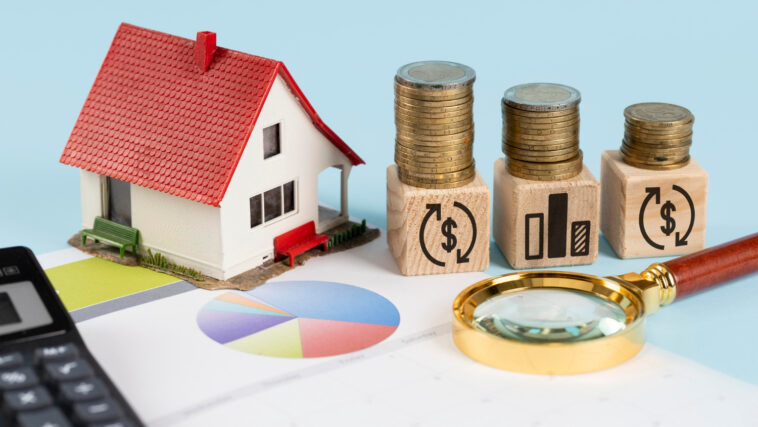When it comes to obtaining a mortgage, one of the most common choices for homebuyers is a 30-year mortgage. This long-term loan option offers advantages and disadvantages that should be carefully considered before making a decision. In this article, we will explore the pros and cons of a 30-year mortgage, helping you determine if it’s the right fit for your financial goals and homeownership aspirations.
1. Understanding the 30-Year Mortgage
A 30-year mortgage is a home loan with a repayment term of 30 years. It is one of the most popular mortgage options due to its extended repayment period, which results in lower monthly payments compared to shorter-term mortgages like 15-year loans. With a 30-year mortgage, borrowers have three decades to repay the principal amount and the interest charged by the lender.
2. The Pros of a 30-Year Mortgage
2.1 Lower Monthly Payments
The primary advantage of a 30-year mortgage is its lower monthly payments. With an extended repayment period, the monthly installment is spread out over 30 years, making it more affordable for many homebuyers. This can be especially beneficial for first-time buyers or those looking to keep their monthly housing expenses manageable.
2.2 Increased Buying Power
Lower monthly payments also mean that borrowers can qualify for a larger loan amount. This increased buying power may enable homebuyers to purchase a more expensive home or a property in a desirable location that might have been out of reach with a shorter-term mortgage.
2.3 More Cash Flow for Other Investments
By opting for a 30-year mortgage, homeowners can free up more cash flow in their monthly budget. This additional money can be allocated to other investments, retirement savings, or emergency funds, allowing for greater financial flexibility and security.
2.4 Predictable Payments
With a fixed-rate 30-year mortgage, borrowers enjoy predictable monthly payments throughout the loan term. The interest rate remains constant, providing stability and making it easier to budget and plan for other financial commitments.
3. The Cons of a 30-Year Mortgage
3.1 Higher Overall Interest Costs
One of the main drawbacks of a 30-year mortgage is the higher overall interest costs compared to shorter-term loans. While the lower monthly payments may be attractive, the extended repayment period results in more interest paid over the life of the loan.
3.2 Slower Equity Build-Up
With a 30-year mortgage, the rate at which homeowners build equity in their property is slower compared to shorter-term loans. In the early years of the mortgage, a significant portion of each payment goes towards interest rather than reducing the principal balance.
3.3 Longer Debt Obligation
Opting for a 30-year mortgage means committing to a longer debt obligation. Borrowers will be making mortgage payments for three decades, which may impact their ability to allocate funds to other financial goals or investment opportunities.
3.4 Potential for Being “House Poor”
While the lower monthly payments can make homeownership more accessible, it’s essential to consider the risk of becoming “house poor.” This term refers to situations where a significant portion of a homeowner’s income goes towards housing expenses, leaving little room for other necessities or discretionary spending.
4. Is a 30-Year Mortgage Right for You?
The suitability of a 30-year mortgage depends on your individual financial circumstances, long-term goals, and risk tolerance. Consider the following factors to determine if a 30-year mortgage aligns with your needs:
4.1 Financial Stability
If you have stable employment and a consistent source of income, a 30-year mortgage may be a viable option. A steady income can help ensure you can comfortably make monthly payments over the extended loan term.
4.2 Long-Term Homeownership Plans
If you intend to stay in the home for an extended period, a 30-year mortgage may be a suitable choice. However, if you plan to move or upgrade within a few years, other mortgage options might be more appropriate.
4.3 Retirement Planning
If you prioritize building retirement savings and have other investment goals, a 30-year mortgage may provide more cash flow to allocate towards these objectives. However, consider the trade-off of potentially higher overall interest costs.
5. Conclusion
Choosing the right mortgage term is a significant decision that can impact your financial well-being for decades. A 30-year mortgage offers lower monthly payments, increased buying power, and greater cash flow for other investments. However, it also comes with higher overall interest costs and a longer debt obligation.
When deciding on a mortgage, carefully assess your financial situation, long-term goals, and risk tolerance. Consider consulting with a qualified financial advisor to gain personalized insights and make an informed choice that aligns with your unique circumstances.
Disclaimer: The information provided in this article is for general informational purposes only and should not be considered as professional financial or legal advice. Before making any significant financial decisions, it’s advisable to consult with a qualified financial advisor or attorney.



